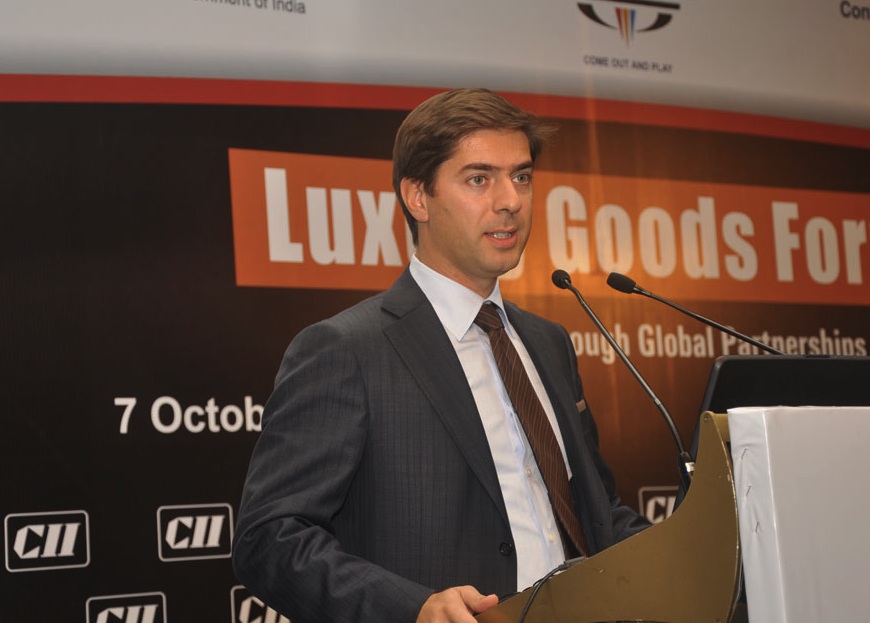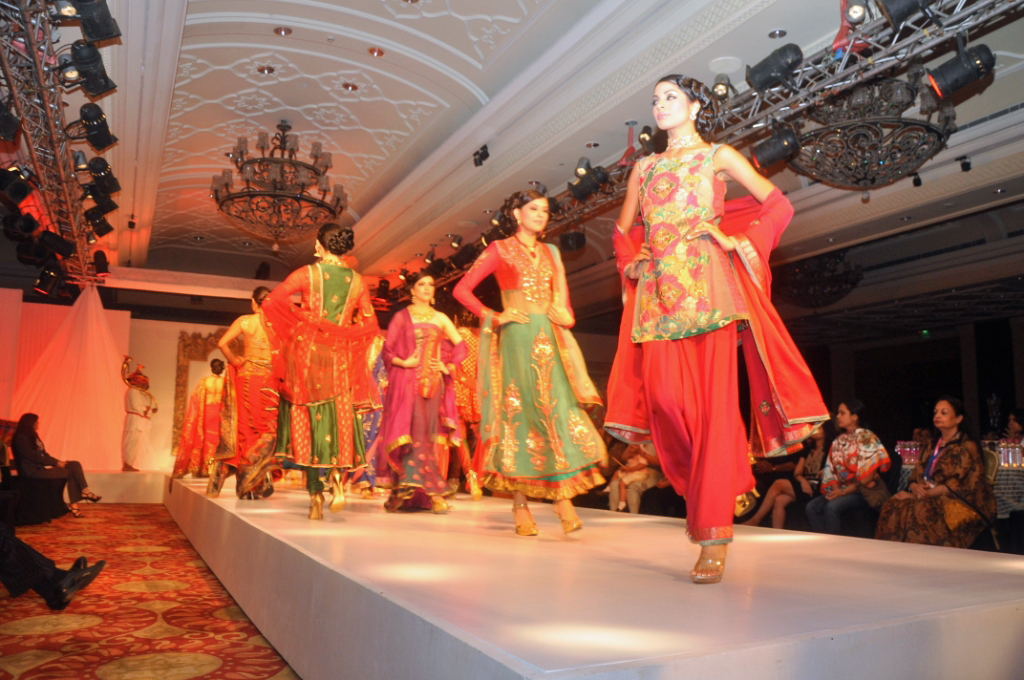
In part two of her two-part series, Soumya Jain, chief editor & CEO of LuxuryFacts, outlines the debates and directions of the Indian luxury market, as heard from the recent CII Luxury Goods Forum
In part two of her two-part series, Soumya Jain, chief editor & CEO of LuxuryFacts, outlines the debates and directions of the Indian luxury market, as heard from the recent CII Luxury Goods Forum
Collaborations in Business: New Frontiers
This session aimed at discussing appropriate ways of collaboration and business models for various stakeholder groups like joint ventures and partnerships, easing barriers for FDI in multi-brand retail and exploring new potentials in luxury including creating marinas. Other issues like revenue sharing models between retailers and real estate players were also discussed.
The session was opened with a keynote address by Marco Bizzarri, CEO of Bottega Veneta. The session moderator was Jayant Kochar, MD, Go Fish Retail Solutions. The panelists included Rajiv Suri (Group CEO – Retail, Jashanmal Group), Armando Branchini, Shubhranshu Pani (MD – Retail, Jones Lang La Salle), Malav Shroff (CEO, Blue Ocean Boating), Sonica Malhotra (Director, MBD Group) and Devaunshi Mehta (President, Dia Precious Ltd).
Marco Bizzarri started his speech by wondering how an Italian could teach Indians about India! This set the tone for the discussion. After giving a brief presentation about his brand Bottega Veneta, he mentioned that the brand is more popular in Asia as compared to Europe and America because Bottega is quality and value for money. Taking a cue from the earlier session, he said that though customization is important, it should not change the brand’s language.
He said that a successful business model is not defined by a franchise or joint venture, it’s about the people and the customer. Therefore, marketing is important, but real luxury comes from consistency and product quality which guarantees success in the long run.
When the question was put up whether international brands needed to partner with Indians to market their brand, Devaunshi Mehta correctly said that Indian to Indian relationship is important, hence partnership is also important. Shubhranshu Pani pointed out that the trust between brand managers and real estate developers is still not there. He also said that luxury in India is slow and will take time to mature.
“ Luxury in India is slow and will take time to mature. ”
Both Rajiv Suri and Sonica Malhotra said that there are no fast returns in luxury. Brands have to stay in India for a long time and market themselves continuously before expecting ROI.
Malav Shroff said that 99.99% luxury consumers have new wealth. Thus luxury brands have to put a whole education process in place. Also, Indians are rational buyers as compared to Westerners who are passionate buyers. Therefore it’s very important to teach Indians about what you want them to buy.
Armando Branchini gave three stages of an emerging luxury market. It starts with Accessible Luxury, goes on to Aspirational Luxury and finally reaches Absolute Luxury. We think keeping these stages in mind and judging their brand penetration on these bases can help clear a lot of things.
India as a Luxury Tourism Hub
After a hearty lunch, the audience filed into the hall for more education and discussion. The topic of the session confused us a bit, but it basically focused on parameters to create Indian luxury brands in the products and services sector. The panelists also talked about connecting luxury with exotic Indian tourism, making India a manufacturing hub, improving infrastructure, increase in airport retail capacity and creating heritage shopping districts.
The keynote address was given by Stefano Canali, General Manager, Canali. The session moderator was Nandini Chopra, Executive Director, KPMG. Her slew of achievements, when read out, made the audience clap and cheer! Panelists included Nakul Anand (Chairman CII National Committee on Tourism and Divisional Chief Executive, ITC Ltd – Hotels Division), Ankur Bhatia (Executive Director, The Bird Group), Mira Gulati (Founder and Principal Designer, Mirari), Savitri Devi Singh (Business Head, DLF Retail) and Pradeep Panicker (Chief Commercial Officer, GMR).
Stefano Canali, after giving a short presentation on the brand, enumerated some post-recession changes in consumer demand. He said that consumers now demand high quality products priced properly, that is, value for money; timeless products, that is, long lasting and consistent with the brand’s DNA; trusted products (long known, known by word of mouth and through social networks); bearing a credible brand heritage; sold/explained by knowledgeable sales people; and showcased in a compelling store with an attractive ambience.

Stefano Canali, General Manager, Canali
Canali also said that India needs basic and luxury infrastructure in place in order to make international brands invest more in India. Import duty reduction is also needed and much welcome.
The panel discussion started with a light presentation by Nakul Anand who tore through some quotes on what luxury means and how it is perceived. It definitely roused everyone from their lethargic state which is quite a common post-lunch phenomenon!
Some interesting case studies came through Mira Gulati and Savitri Devi Singh. Gulati started her own jewellery brand Mirari in India. The production and manufacturing of the jewellery is done in India and she has made the brand global to a certain extent. Armed with beautifully designed Indian heritage inspired jewellerey and singer Anoushka Shankar as the brand ambassador, Mirari is going places globally. She said that though India has the best of resources and human power, one thing that Indian-born luxury brands have to learn from international brands is presentation.
Savitri Devi Singh rued the lack of government support which prevents India from becoming a luxury tourism hub. She cited the example of DLF Emporio and told the astonished audience that they had to make the road in front of the mall themselves and generate their own electricity for the mall – something which the government should have given them.
Ankur Bhatia also supported the fact and said that the whole framework has to be there, including roads, infrastructure and malls, to portray India as a luxury tourism hub.

Role of Media
As the name says, the session delved into how media can be used to help in the growth of the luxury industry.
The keynote address was given by James Greenfield, CEO, Kenzo. The session moderator was Manvi Dhillon, Resident Editor, NDTV Ltd. Panelists included Colvyn Harris (CEO, JWT), Santosh Desai (MD and CEO, Future Brands), Mala Sekhri (COO, Lifestyle Group and Music Today), Anita Khatri (General Manager, Times of India) and Feroze Gujral (Fashion Consultant and Columnist, Vogue).
Appreciatively, James Greenfield was the only keynote speaker who did not give a presentation about his brand! As other speakers before, he also said that building awareness and educating consumers is the key to generating traffic. He enumerated three major brand enhancers:
1. Fashion shows and product presentations
2. Print and outdoor advertising
3. In-store events
He, however, also said that online medium is coming up as a big influencer too. Therefore, they have recently launched an online store; e-CRM is important; and blogs and social networking is important as well.
He raised two very important questions to the panel:
1. What innovations are needed to educate consumers about new luxury?
2. How to increase retail traffic?
Colvyn Harris instantly answered both the questions by saying that international brands have to first invest in India, stay here, understand the market and not back out – then only can the media be expected to help in the growth of luxury brands.
Santosh Desai said that brands need to connect themselves with some cultural signposts in India so that people recognize them. A case in point is taking Bollywood icon Shahrukh Khan as the brand ambassador for Tag Heuer. Indians now KNOW about the watch brand due to their association with the superstar.
“ Brands need to connect themselves with some cultural signposts in India so that people recognize them. ”
Feroze Gujral, in turn, said that Internet is a very powerful medium and should not be avoided. She cited the example of Burberry streaming their London Fashion Week show live to Burberry stores across the world where the viewers could order the clothes straight off the ramp on the iPads which were provided to them.
Other panelists, however, were a little skeptic about the online medium. Harris categorically said that selling luxury brands online in India will take a long time to pick up since Indians still like to ‘see, touch and feel’ what they are buying, specially when it’s something so luxurious. But everyone was willing to agree that internet is a growing medium and one which cannot be avoided.
On this note, the sessions ended and the delegates walked around to network among peers. A beautifully organized fashion show with apparel by Ashima-Leena and jewellery by Mirari set the tone right for a cocktail party. Guests enjoyed the beautiful Indian collection by the designers as wine, champagne flutes and cocktails were passed around.
On the whole, it was a luxuriously appointed day which began with some serious work and ended with some cheerful camaraderie among luxury industry professionals. A new found enthusiasm to build and grow the industry together…
Soumya Jain, Chief Editor & CEO, LuxuryFacts

